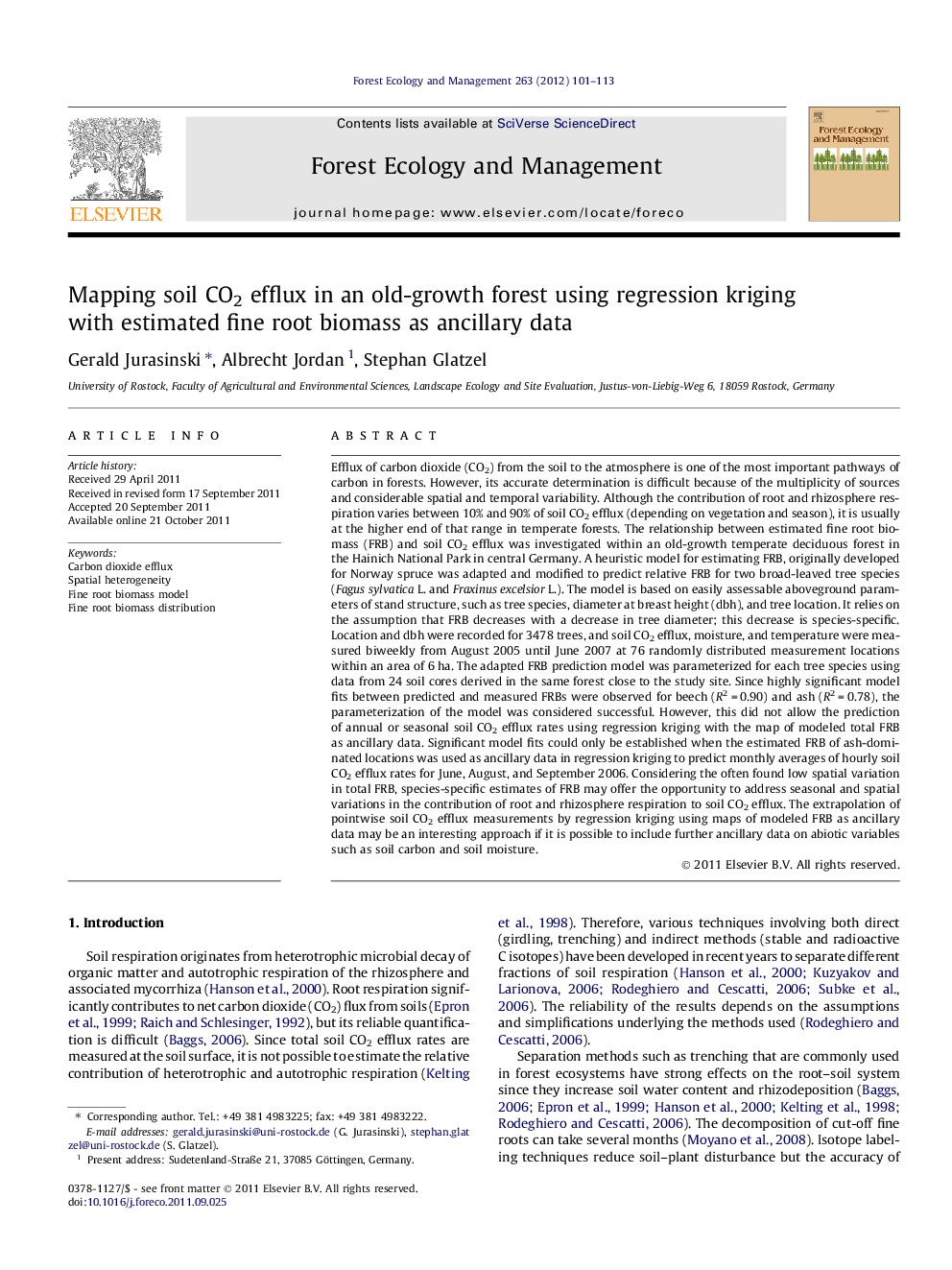| کد مقاله | کد نشریه | سال انتشار | مقاله انگلیسی | نسخه تمام متن |
|---|---|---|---|---|
| 87757 | 159265 | 2012 | 13 صفحه PDF | دانلود رایگان |

Efflux of carbon dioxide (CO2) from the soil to the atmosphere is one of the most important pathways of carbon in forests. However, its accurate determination is difficult because of the multiplicity of sources and considerable spatial and temporal variability. Although the contribution of root and rhizosphere respiration varies between 10% and 90% of soil CO2 efflux (depending on vegetation and season), it is usually at the higher end of that range in temperate forests. The relationship between estimated fine root biomass (FRB) and soil CO2 efflux was investigated within an old-growth temperate deciduous forest in the Hainich National Park in central Germany. A heuristic model for estimating FRB, originally developed for Norway spruce was adapted and modified to predict relative FRB for two broad-leaved tree species (Fagus sylvatica L. and Fraxinus excelsior L.). The model is based on easily assessable aboveground parameters of stand structure, such as tree species, diameter at breast height (dbh), and tree location. It relies on the assumption that FRB decreases with a decrease in tree diameter; this decrease is species-specific. Location and dbh were recorded for 3478 trees, and soil CO2 efflux, moisture, and temperature were measured biweekly from August 2005 until June 2007 at 76 randomly distributed measurement locations within an area of 6 ha. The adapted FRB prediction model was parameterized for each tree species using data from 24 soil cores derived in the same forest close to the study site. Since highly significant model fits between predicted and measured FRBs were observed for beech (R2 = 0.90) and ash (R2 = 0.78), the parameterization of the model was considered successful. However, this did not allow the prediction of annual or seasonal soil CO2 efflux rates using regression kriging with the map of modeled total FRB as ancillary data. Significant model fits could only be established when the estimated FRB of ash-dominated locations was used as ancillary data in regression kriging to predict monthly averages of hourly soil CO2 efflux rates for June, August, and September 2006. Considering the often found low spatial variation in total FRB, species-specific estimates of FRB may offer the opportunity to address seasonal and spatial variations in the contribution of root and rhizosphere respiration to soil CO2 efflux. The extrapolation of pointwise soil CO2 efflux measurements by regression kriging using maps of modeled FRB as ancillary data may be an interesting approach if it is possible to include further ancillary data on abiotic variables such as soil carbon and soil moisture.
► Maps of soil respiration maybe constructed from point-wise measurements.
► To improve those we use regression kriging with fine root biomass as ancillary data.
► Fine root biomass is modeled per species from simple stand characteristics.
► This is the first application of heuristic fine root biomass models to broadleaved species.
► Tree specific fine root biomass explains monthly soil respiration rates.
Journal: Forest Ecology and Management - Volume 263, 1 January 2012, Pages 101–113